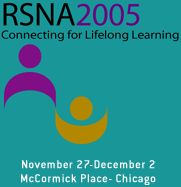
Abstract Archives of the RSNA, 2005
John Michael Buatti, Abstract Co-Author: Nothing to Disclose
Geraldine M. Jacobson MD, MPH, Presenter: Nothing to Disclose
Purpose/Objective: Despite advances in technology the implementation of a completely paperless and filmless digital radiotherapy clinic is nettlesome. Furthermore, the transformation to a completely digital environment in a large academic clinic is even more complex. This report outlines an algorithm for transformation from a traditional environment to the paperless digital environment. Materials/Methods: Preparation for algorithm development began with a commitment by all stakeholders to achieve the paperless digital environment. All planning was initiated from a practical and bottom up approach. A team consisting of physicians (attending and resident), physicists, dosimetrists, radiation therapists, nurses, administrators, billing personnel and clerks evaluated all steps in workflow and paper dependent information flow. The group then designed replacement digital-based communication, documentation and workflow systems. Communication with hospital based information systems via a designated liaison was established. Consideration of individual processes including consultation, follow-up, single and multimodality simulation/imaging visit, treatment planning, verification, treatment visit, on-treatment physician visit, and treatment completion visit were mapped separately for work-flow and communication algorithms. Opportunities to institute clinical pathways and systematically reduce variability within this framework were identified to improve patient outcomes that are consistent with national efforts to improve healthcare delivery processes (Institute of Medicine (IOM). Following design the entire department participated in a 3 month period of scenario based evaluation and training exercises that lead to further refinement and improvement of algorithms Results: Development of algorithms was a complex process requiring detailed planning by all members of the identified team. Interactive meetings lead to generation of an algorithmic model that digitally accounts for all critical patient care, documentation and billing activity essential to radiotherapy clinic functions. An example simulation/imaging algorithm follows: Conclusions: Transformation of clinic operations to a paperless digital environment is a complex but achievable process. Detailed input from the entire staff and considerations of workflow, communication, and documentation are all critical. Opportunities to reduce variability in operations provide for potential improvements in outcomes as supported by IOM initiatives.
Buatti, J,
Jacobson, G,
Process Algorithm for Transformation to a Paperless Digital Radiotherapy Environment. Radiological Society of North America 2005 Scientific Assembly and Annual Meeting, November 27 - December 2, 2005 ,Chicago IL.
http://archive.rsna.org/2005/4420794.html

